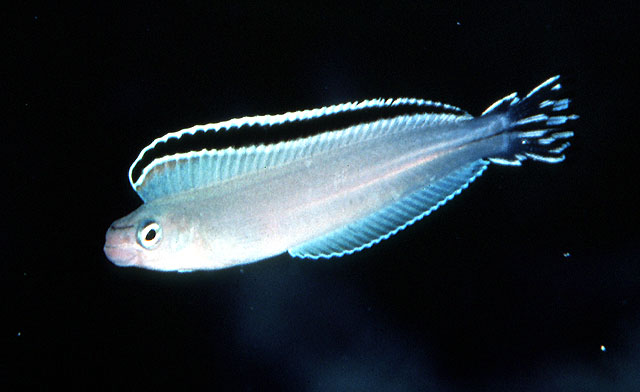| Blenniidae (Combtooth blennies), subfamily: Blenniinae |
| 8 cm TL (male/unsexed) |
|
reef-associated; marine; depth range 1 - 10 m |
| Indian Ocean. |
|
Dorsal spines (total): 7-8; Dorsal soft rays (total): 27-29; Anal spines: 2-2; Anal soft rays: 20-23. Pale grey body, dorsal fin with black submarginal stripe. Pectoral rays typically 12; large curved canine tooth posteriorly on side of lower jaw; interorbital pores 1-2; body depth about 8.0 in SL. Maximum size to 5.1 cm TL (Ref. 90102). |
| Adults are found solitary in coastal, lagoon, and outer reefs, 1-10 m deep (Ref. 90102). Oviparous. Eggs are demersal and adhesive (Ref. 205), and are attached to the substrate via a filamentous, adhesive pad or pedestal (Ref. 94114). Larvae are planktonic, often found in shallow, coastal waters (Ref. 94114). A mimic of Meiacanthus smithi (Ref. 9710). |
|
Least Concern (LC); Date assessed: 27 March 2009 Ref. (130435)
|
| harmless |
Source and more info: www.fishbase.org. For personal, classroom, and other internal use only. Not for publication.

